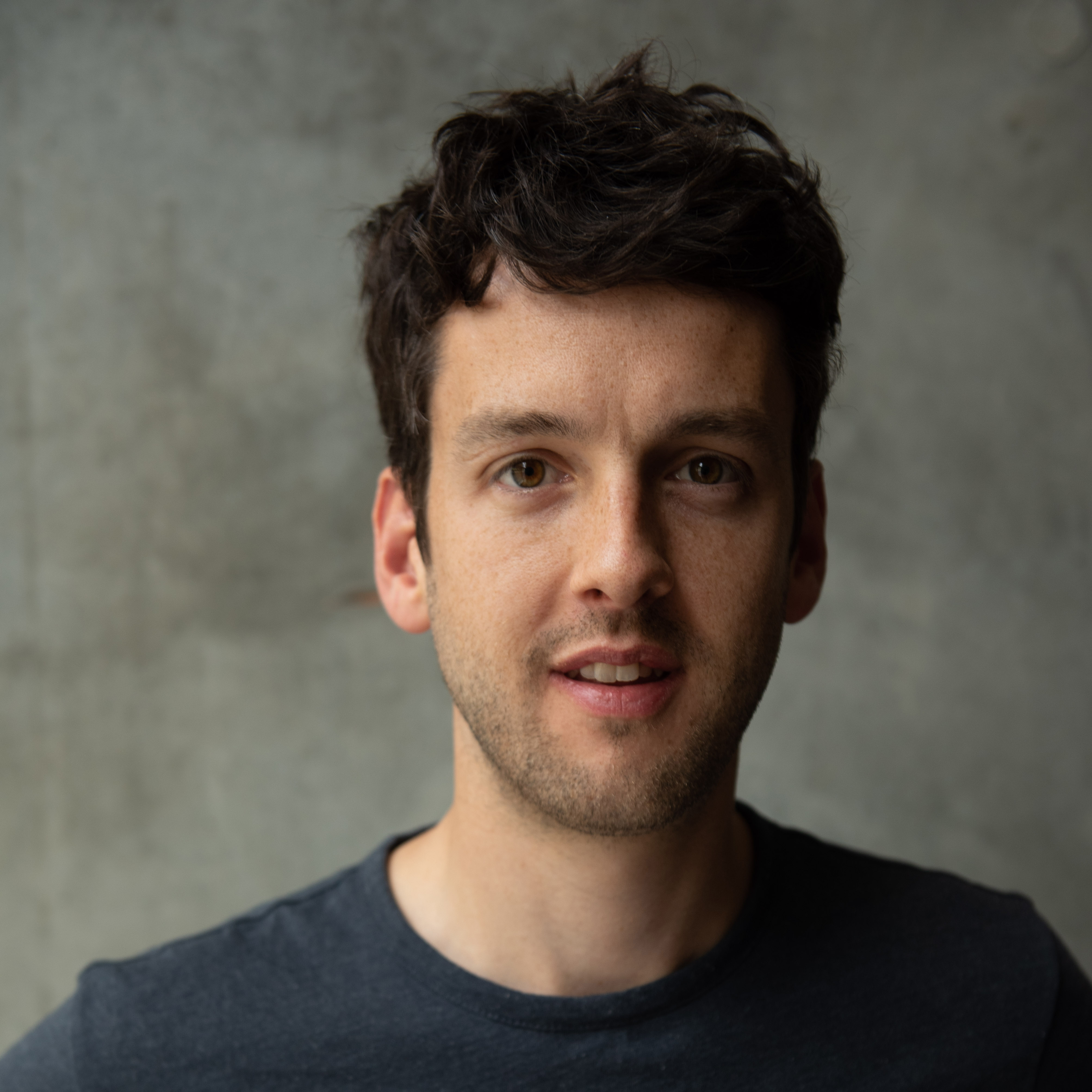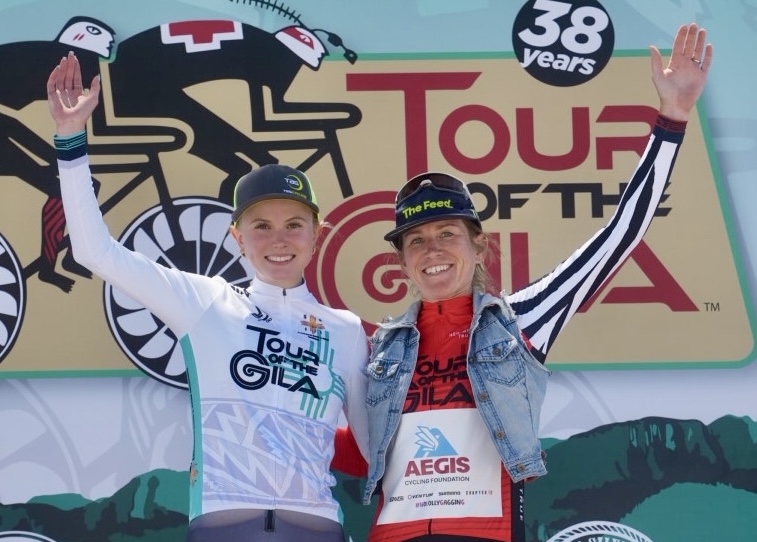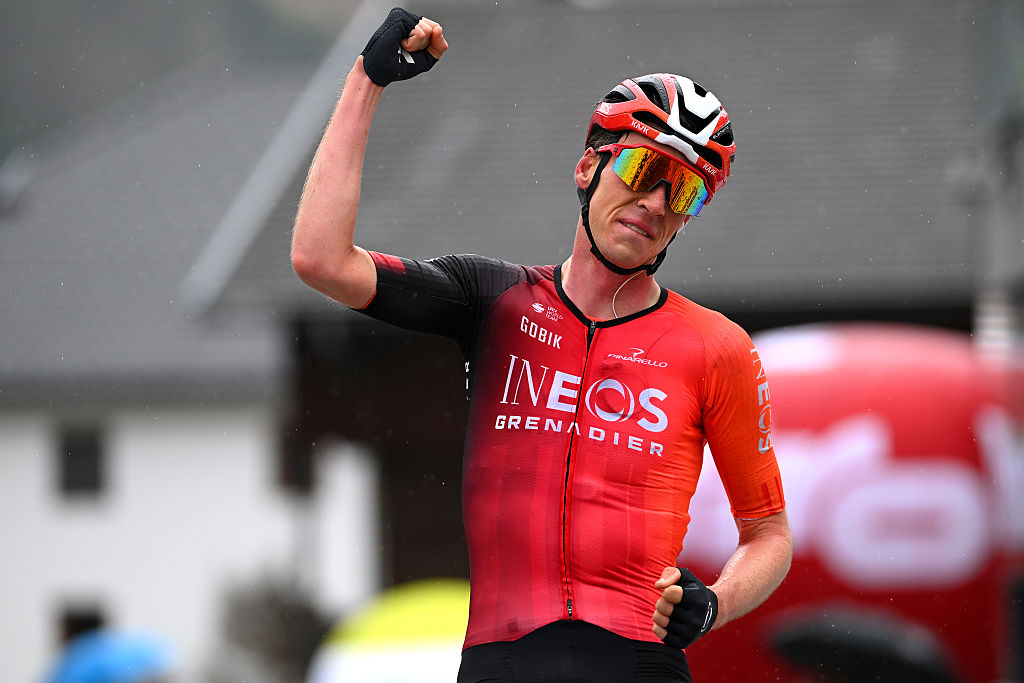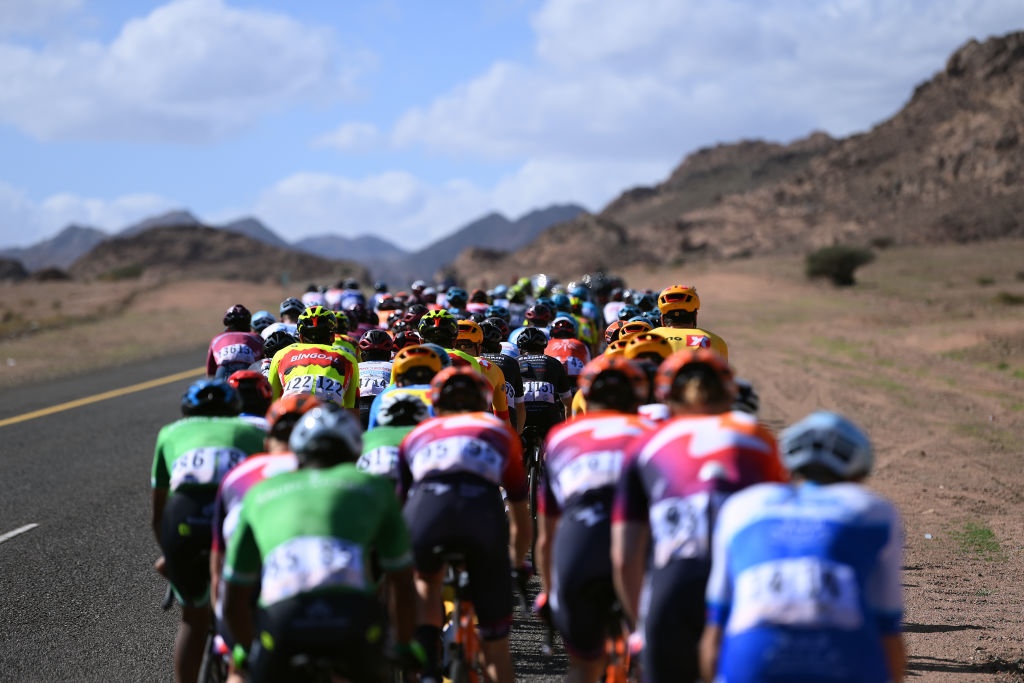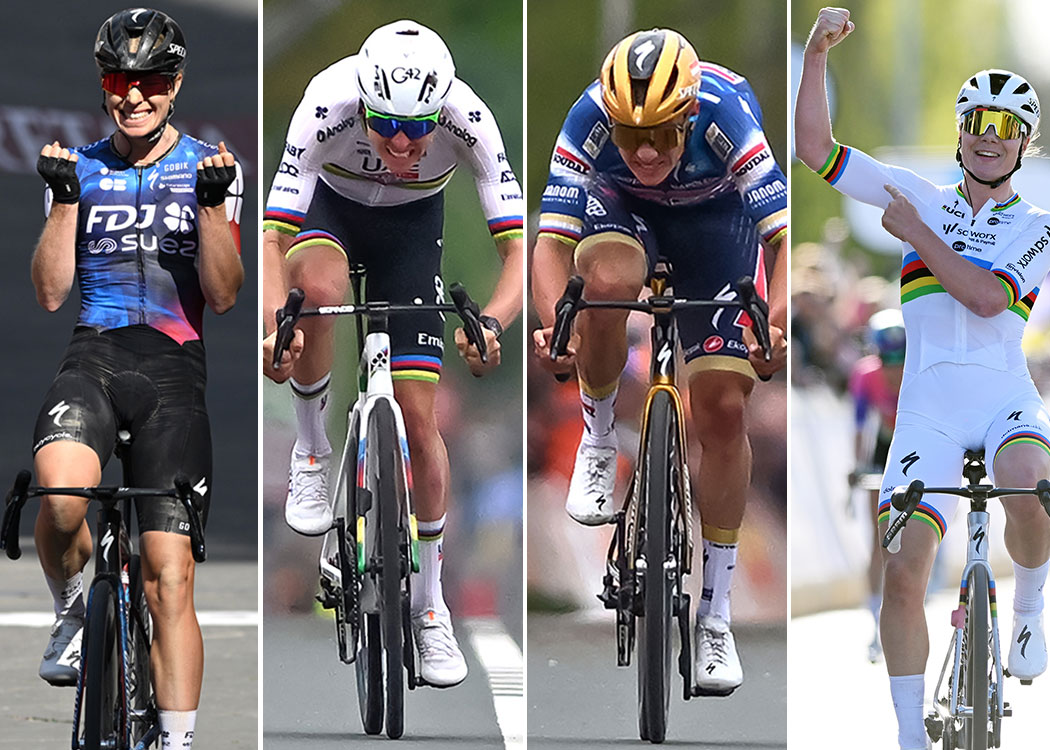Can anyone stop Roglic? Critérium du Dauphiné 2022 Preview
Jumbo-Visma bring out the big guns as Ineos Grenadiers and UAE Team Emirates send their Tour leaders elsewhere
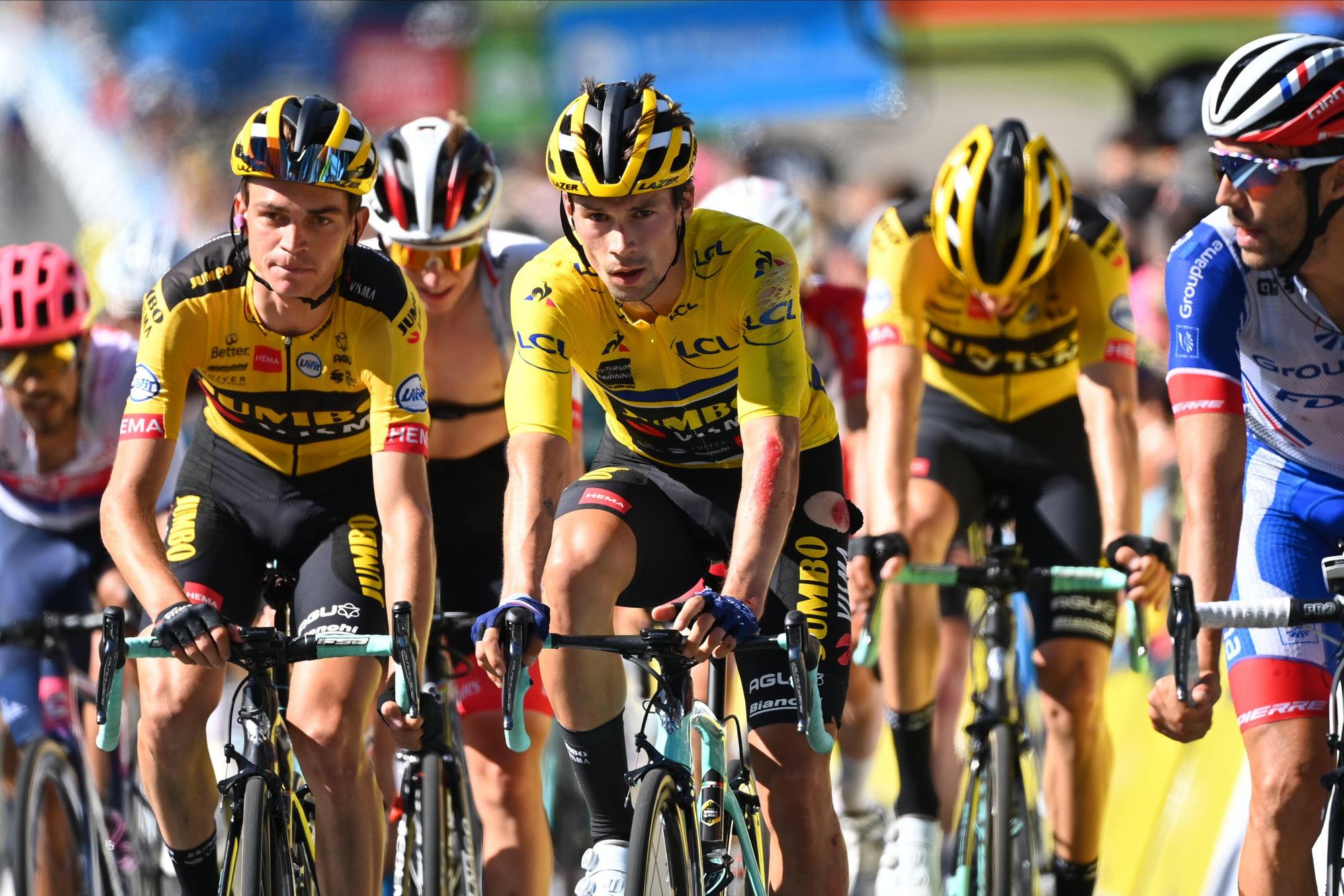
Ineos Grenadiers have won seven of the past 11 editions of the Critérium du Dauphiné but Jumbo-Visma appear to be the leading force this year, with Primož Roglič the overwhelming favourite for victory.
The week-long stage race in southern France is one of the key build-up races ahead of the Tour de France. It starts on Sunday and finishes 8 stages later, just under three weeks out from the Grand Départ of the Tour in Copenhagen.
The race has perhaps lost a little of its status as the definitive pre-Tour hit-out. Tadej Pogačar, winner of the past two Tours, has once again opted to race the Tour of Slovenia in his home country, while Ineos Grenadiers have this year favoured the Dauphiné’s old rival. The British team’s probable trio of leaders for July – Adam Yates, Dani Martinez, and Geraint Thomas – are all in action at the Tour de Suisse, which overlaps by a day, leaving Ineos with something of a B-team at the Dauphiné.
Jumbo-Visma, however, are going all in. They bring not only Roglič but what looks like a near-complete Tour de France lineup, including co-leader Jonas Vingegaard, who was a breakthrough second overall at last year’s Tour. Wout van Aert is in action ahead of his first concerted bid for the Tour’s green jersey, the Belgian champion not only providing luxury support but also a possible contender for a variety of stages, not least the mid-race time trial.
Rohan Dennis, Christophe Laporte, Steven Kruijswijk, and Tiesj Benoot complete the lineup. Jumbo-Visma have indicated there are three names confirmed on their Tour lineup – Roglič, Vingegaard, Van Aert – but the other four are all on the long list and will be out to cement their tickets to Copenhagen with a strong collective showing.
Between them, Roglič and Van Aert could compete for most stages in most races, but this year’s Dauphiné route looks particularly amenable. It’s certainly less mountainous than in recent years, with the emphasis very much on the moderately hilly terrain. There are only two true climbing stages, which makes the lengthy mid-race time trial even more pivotal. Roglič, the Olympic time trial champion and a rider who can not only win stages in the mountains but take out bonus seconds throughout, is going to take some beating.
In terms of who’ll provide the competition, there’s no Pogačar, but UAE Team Emirates will nevertheless field a strong squad, led by Brandon McNulty, who had a strong start to his third year as a pro. Like Roglič, he’ll likely be a strong performer in the time trial and will gain time over the pure climbers there. Two more of Pogačar’s key lieutenants – Rafal Majka and George Bennett – will also be there, as should Spanish prodigy Juan Ayuso.
Ineos Grenadiers, meanwhile, are led by Tao Geoghegan Hart, winner of the 2020 Giro d’Italia. The Briton, however, is far from certain of a spot on the Tour lineup and, after a relatively low-key season so far, will be keen to grasp a rare shot at leadership. Filippo Ganna is a shoo-in for the Tour and will be at the Dauphiné to hone his time trialling skills on stage 4 ahead of the opening TT at the Tour, while Dylan van Baarle is another likely domestique for the Tour, but one who is set to shift to Jumbo-Visma next season. The most active Ineos rider could turn out to be Ethan Hayter, the rising talent who will find the wealth of moderately hilly stages well suited to his fast finish on tough terrain.
Enric Mas (Movistar) is the next biggest name as far as Tour de France contenders go, while David Gaudu leads Groupama-FDJ alongside Michael Storer as Thibaut Pinot takes aim at the Tour de Suisse. Gaudu is a top climber with a zippy finishing kick but his bid for overall honours is complicated by the time trial.
The Australian pair of Ben O’Connor (AG2R Citroën) and Jack Haig (Bahrain Victorious) will be buoyed by their compatriot Jai Hindley’s recent Giro d’Italia victory as they look to set our their Tour de France credentials. Elsewhere, the start list is not yet complete, but includes the likes of three-time Dauphiné winner Chris Froome (Israel-Premier Tech) and a couple of riders looking to cash in on post-Giro form, such as Wilco Kelderman (Bora-Hansgrohe).
The route
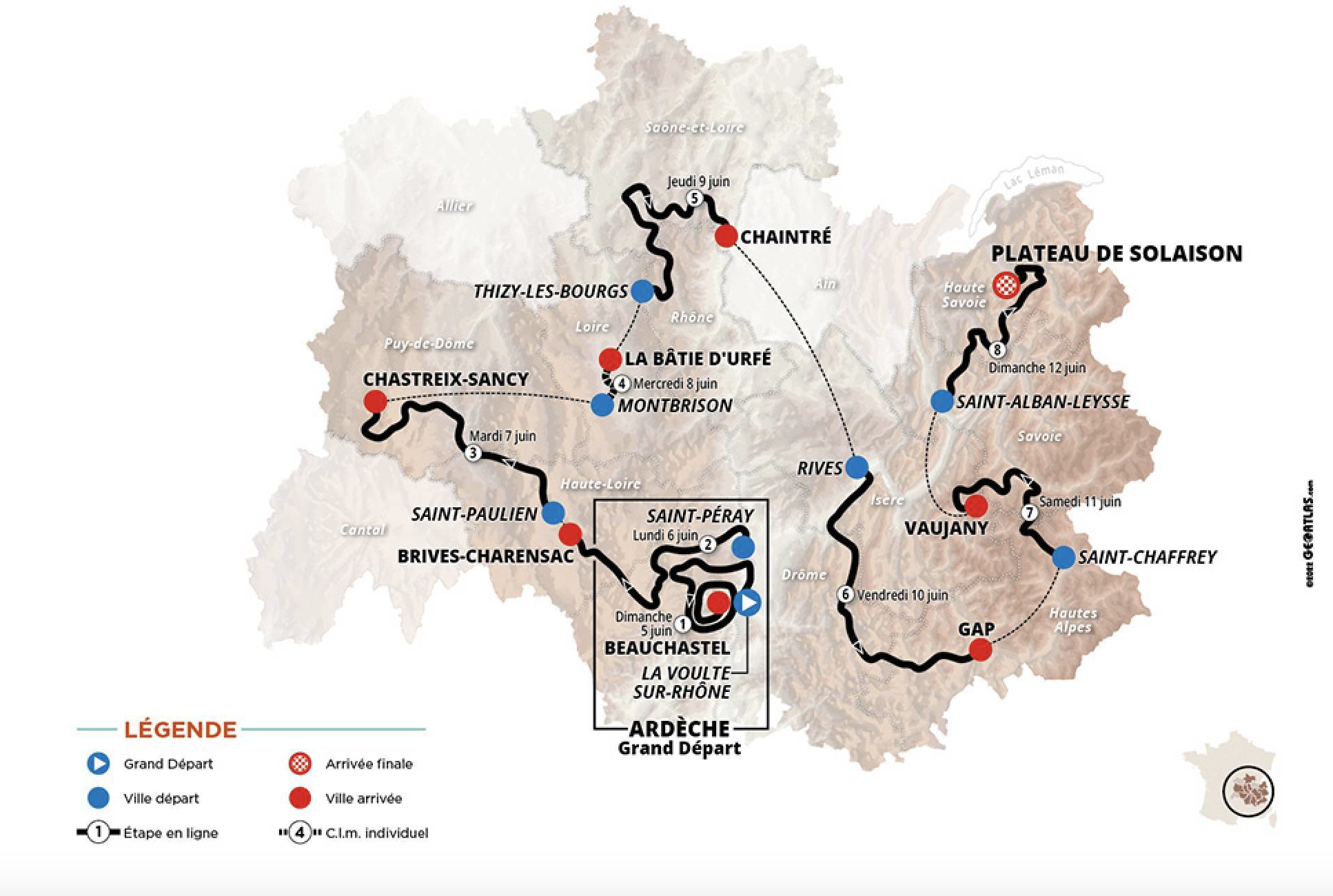
The 2022 Dauphiné features eight stages, the most crucial from a GC perspective being the stage 4 time trial and the summit finishes on the last two days.
There isn’t much in the way of flat terrain, which explains why there’s only one sprinter – Dylan Groenewegen (BikeExchange-Jayco) – on the initial provisional start list. The race opens with two stages in the undulating region of the Ardèche, which perhaps lend themselves more to reduced bunch sprints from the stronger climbers, or potential successful breakaways.
The opener is a 192km leg from La Voulte-sur-Rhône to Beauchastel, with a finishing circuit that contains a climb 30km from the finish, where the sprinters will have to fight to stay in contention. Stage 2 to Brives-Charensac features a long category 2 climb before a descent and several more undulations on the run-in. The first uphill finish comes in the Puy-de-Dome region at Chastreix-Sancy on stage 3, another undulating stage culminating in a final climb of 6.2km at 5.6%.
Stage 4 is the time trial – not only a key stage in the contest for overall honours but a key test ahead of the Tour de France. At 31.9km, it’s a lengthy test that will significantly shape the leaderboard and the action to follow in the mountains. Running from Montbrison, the finish in La Bâtie d’Urfé is due north but there are several twists and turns, although the terrain is largely flat.
The race then heads towards the Alps via two more undulating stages. The first heads to Chaintré, north of Lyon, and, despite a couple of late kickers, is the most likely to end in a bunch sprint. The following stage to Gap looks like fertile ground for a breakaway, with two category 2 climbs and an undulating run-in.
The final weekend is where we find the race in terrain the Dauphiné is more known for: the Alps. This year, the mountain action is condensed into two days but they’re both short and potentially explosive ones. The first starts out from Saint-Chaffrey and heads straight up the Col du Galibier (from the easier side) at 2642 metres above sea level, before a long descent into the valley and a trip up the achingly long Col de la Croix de Fer. Both are hors-catégorie climbs that dwarf the summit finish, a relatively punchy 5.7km (7.2%) haul up to the ski resort of Vaujany.
The final day also starts out with a tough climb – the category 1 Col de Plainpalais – before a more gentle stretch and then the category 1 Col de la Colombière. This time the summit finish is a beast at 11.3km at 9.2% up to the Plateau de Solaison, where Jakob Fuglsang dramatically turned the tables on Richie Porte on the final day of the 2017 edition.
Get The Leadout Newsletter
The latest race content, interviews, features, reviews and expert buying guides, direct to your inbox!
Patrick is a freelance sports writer and editor. He’s an NCTJ-accredited journalist with a bachelor’s degree in modern languages (French and Spanish). Patrick worked full-time at Cyclingnews for eight years between 2015 and 2023, latterly as Deputy Editor.
Latest on Cyclingnews
-
Tour of the Gila: Lauren Stephens extends her lead with victory at Mogollon on stage 2
José Ramón Muñiz claims men's stage 2 -
'There are more opportunities to race aggressively' – New Ineos Grenadiers ethos earns Thymen Arensman his first win for the team
Dutchman took victory and the race lead at the Tour of the Alps with an audacious 80km attack on stage 4 -
What is One Cycling? - Everything we know about the project that wants to revolutionise professional cycling
Some teams and race organisers hope to work together and grow the cycling revenue pie to cover -
Liège-Bastogne-Liège 2025 – Analysing the contenders
World champions Tadej Pogačar and Lotte Kopecky targeting final Spring Classic of the season
